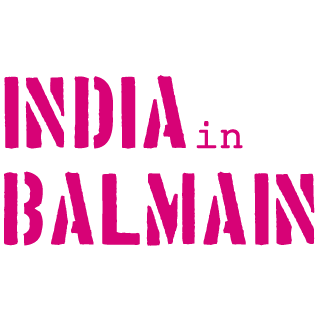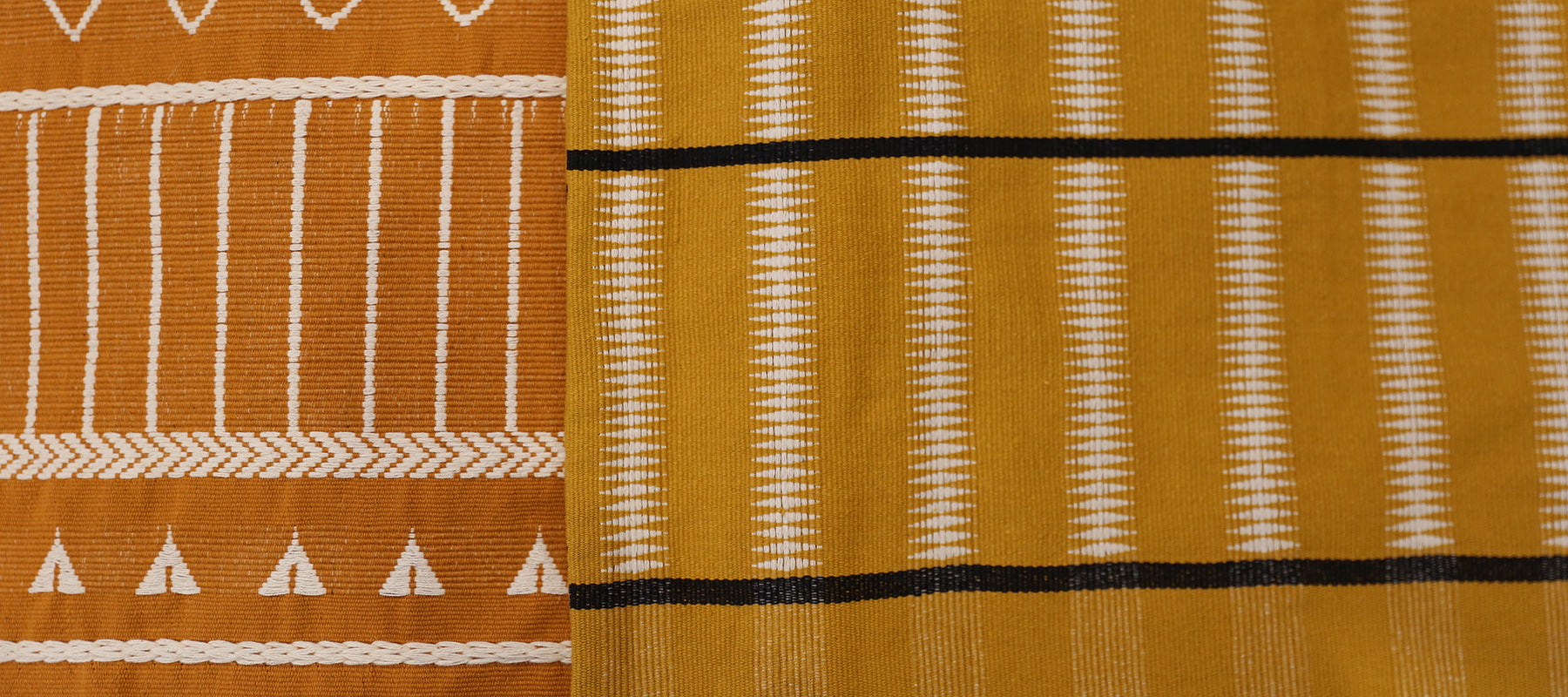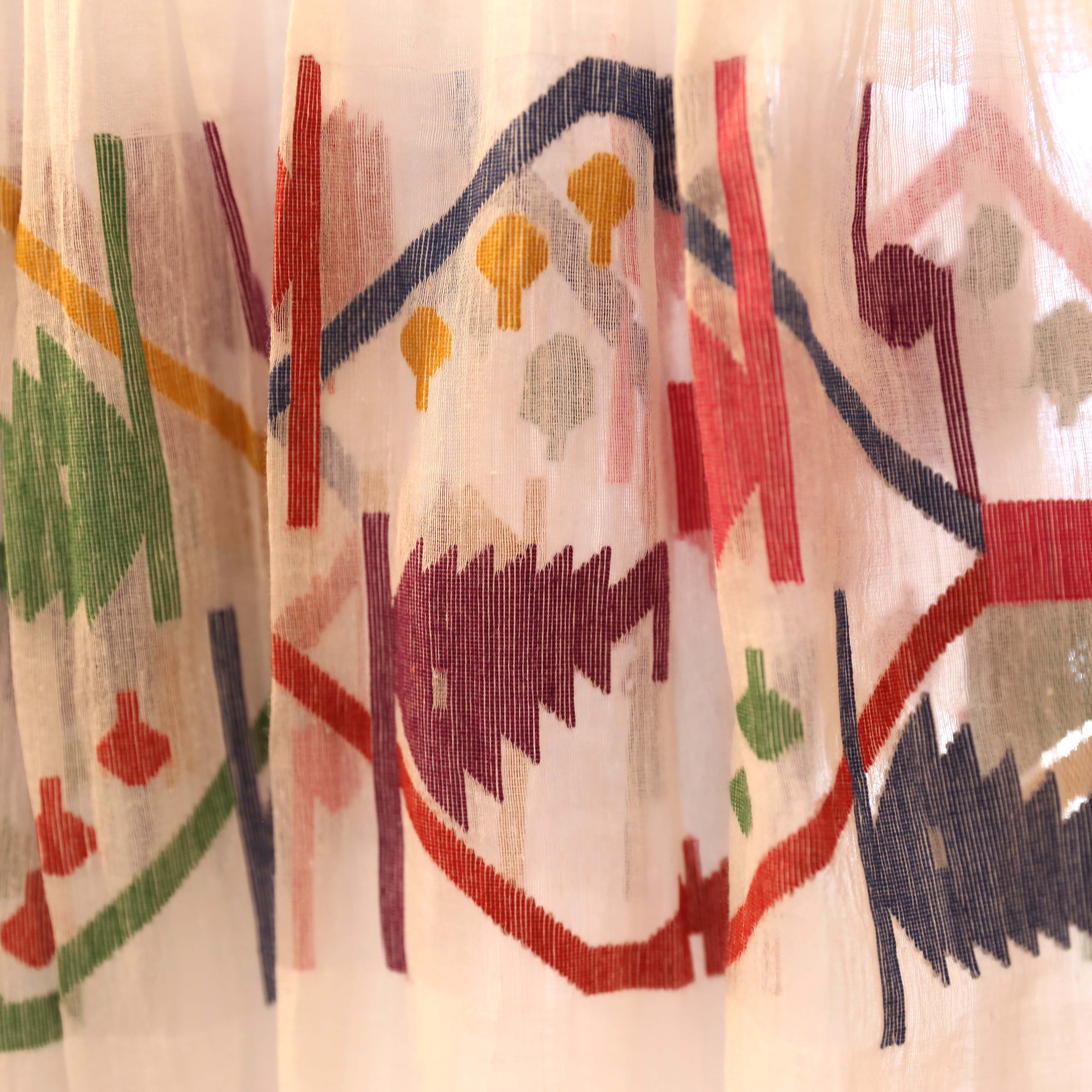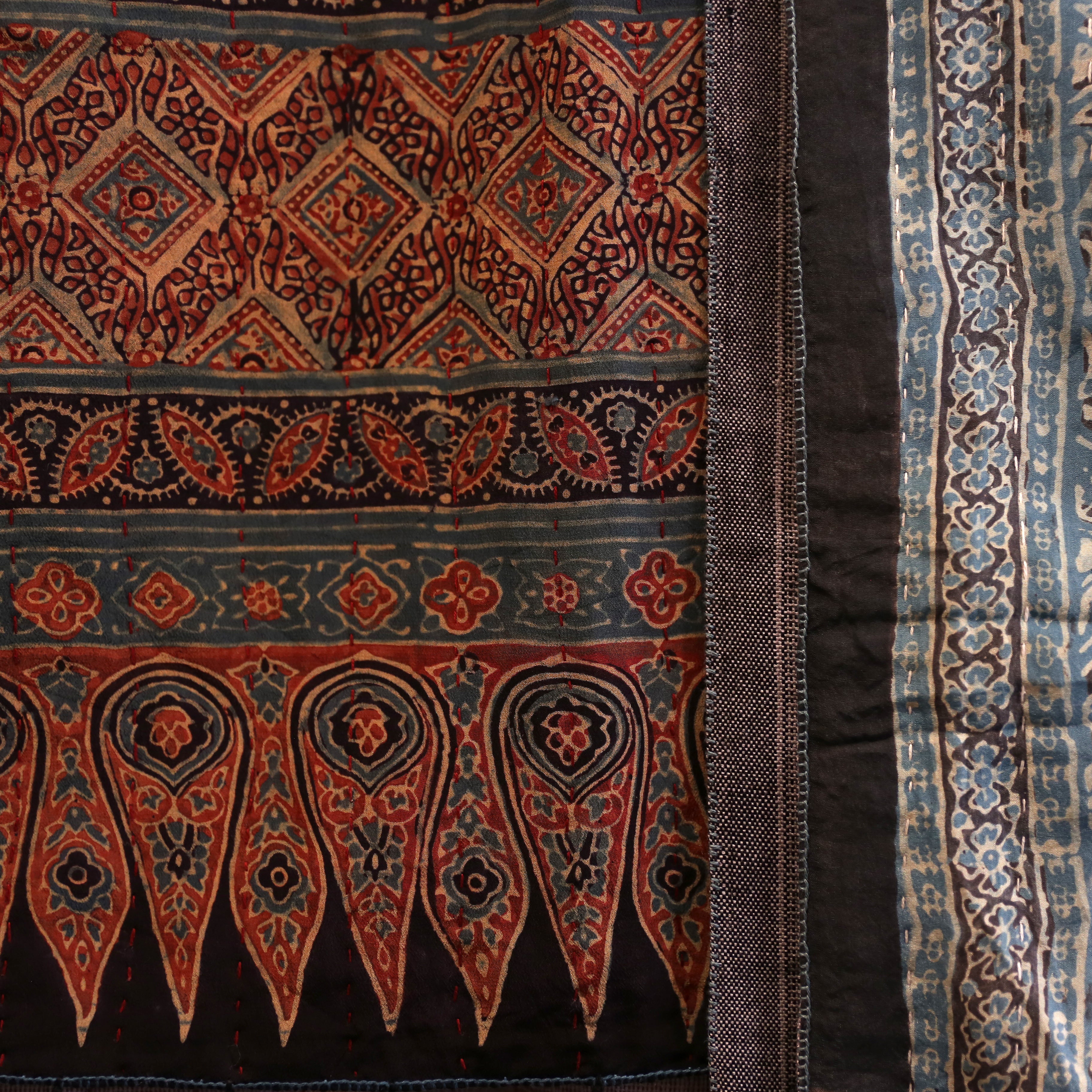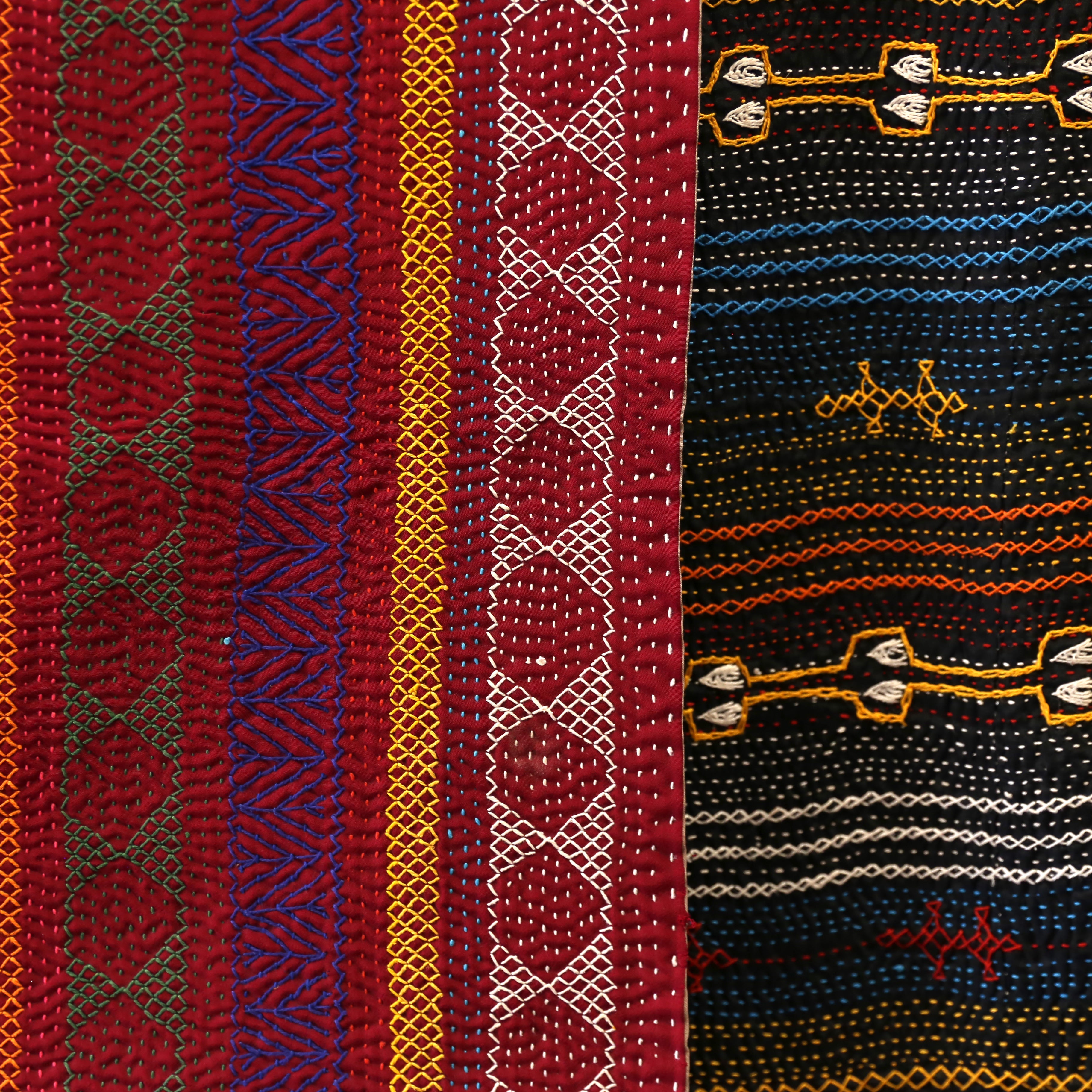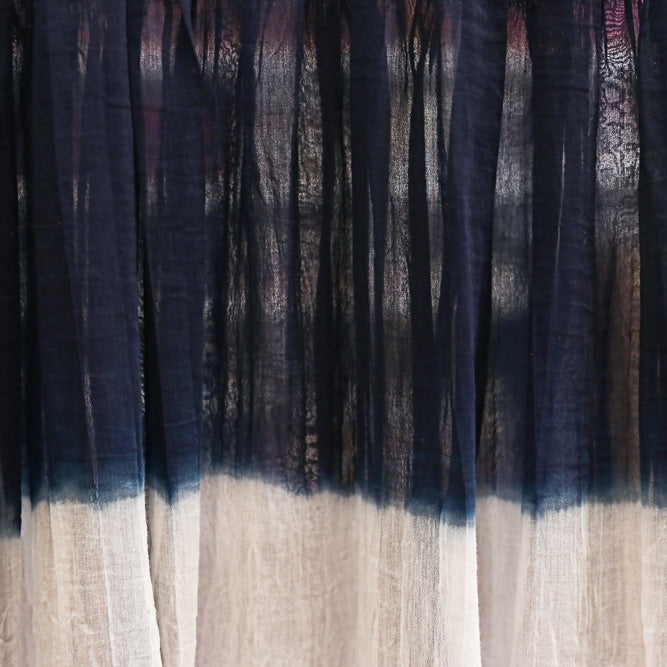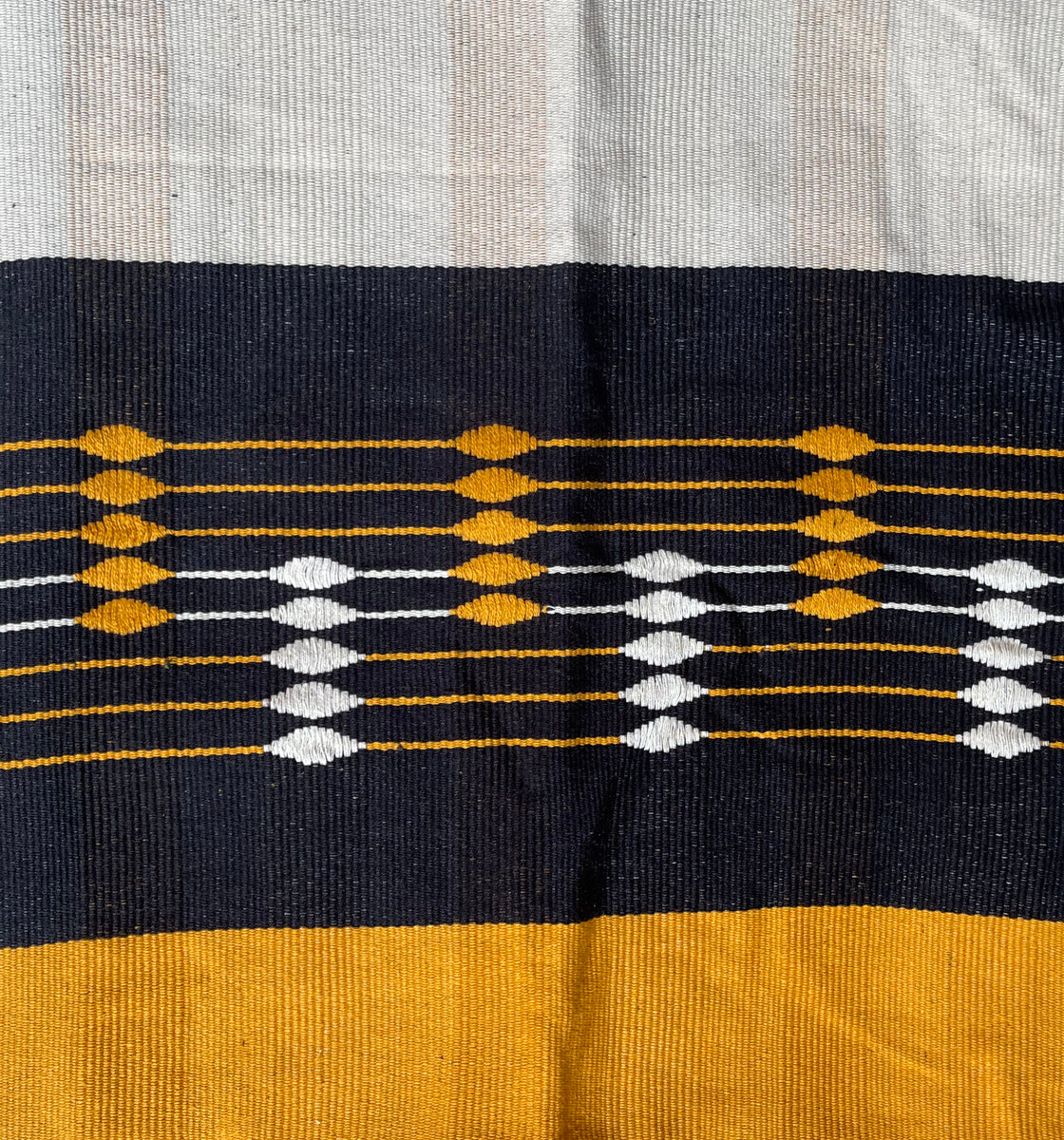
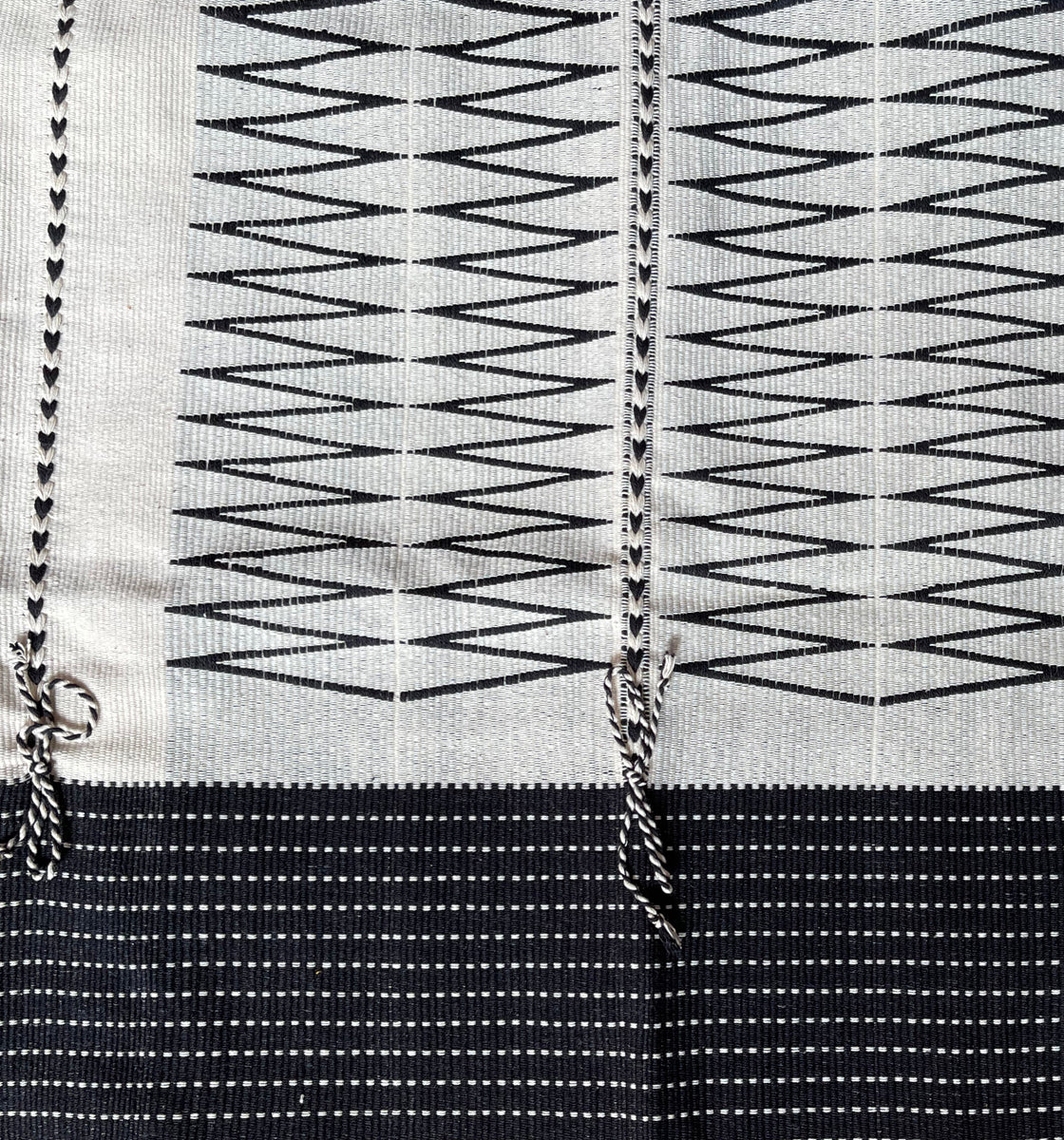
Woven ⋮ Nagaland Weaving
Nagaland is a mountainous state in the far north east of India, bordered by the Indian state of Assam and the country of Myanmar. It is home to 16 hill tribes who weave their distinctive patterns and motifs on loin looms or back-strap looms - a device adjustable to the body of the weaver, with the weaving done without any mechanical adjustments.
The women folk of Nagaland mainly engage in the spinning of textiles. A woman generally spins the clothes of her family members. It had been a custom in Nagaland that every girl who attains the age of marriage, should be able to spin and weave. In fact, many little girls are found playing with toy looms and making experiments with weaving.
Generally the process of spinning is simple and with the use of some very simple tools it gets done successfully. After being cleaned off its seeds, the cotton gets rolled gently by hands using a round stick on a flat stone. Cotton gets rolled just like sausages. The typical Naga spindle is a primitive device and spinning is quite a time-consuming task.
The loom consists of continuous warp stretched between two parallel bamboos, with one held at door or post and the other end converted into a strap held at the weaver waist. The back strap loom is supposed to be one of the oldest methods used for weaving cloth.
Any variations or irregularities are part of the design and inherent to the production process.
Each Naga tribe has is own motif and design which forms its distinct identity, tribal belonging, social status and wealth.
